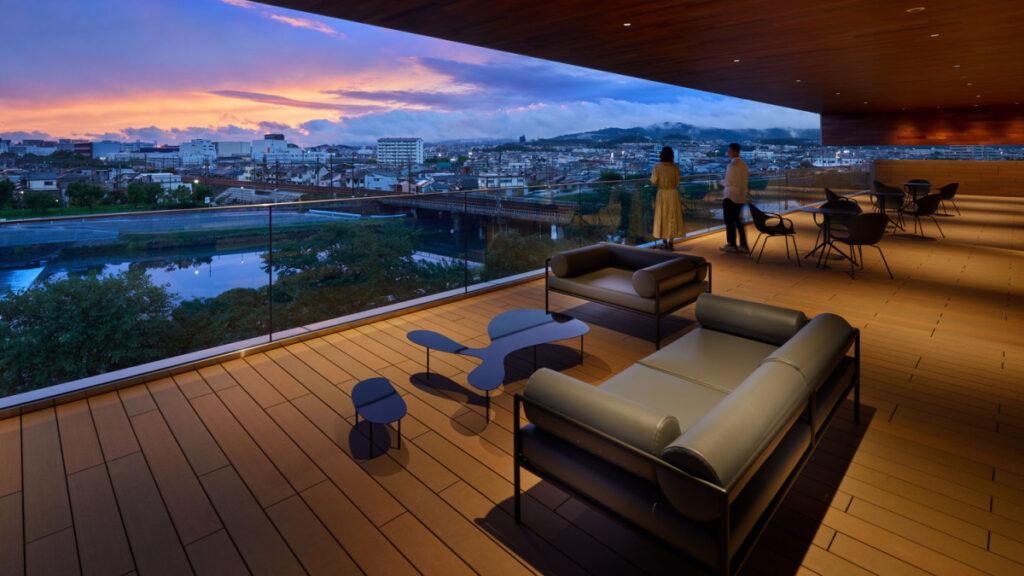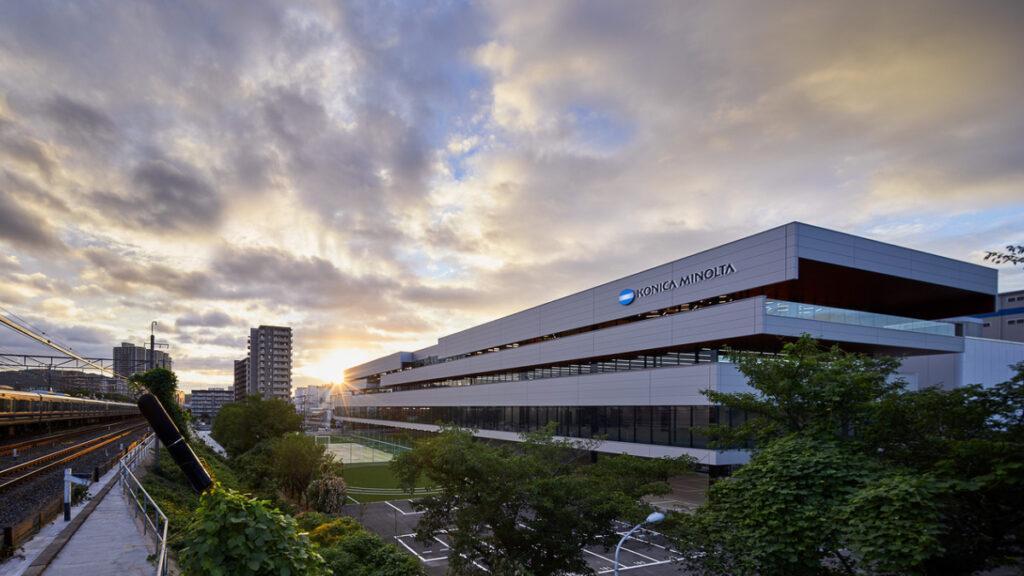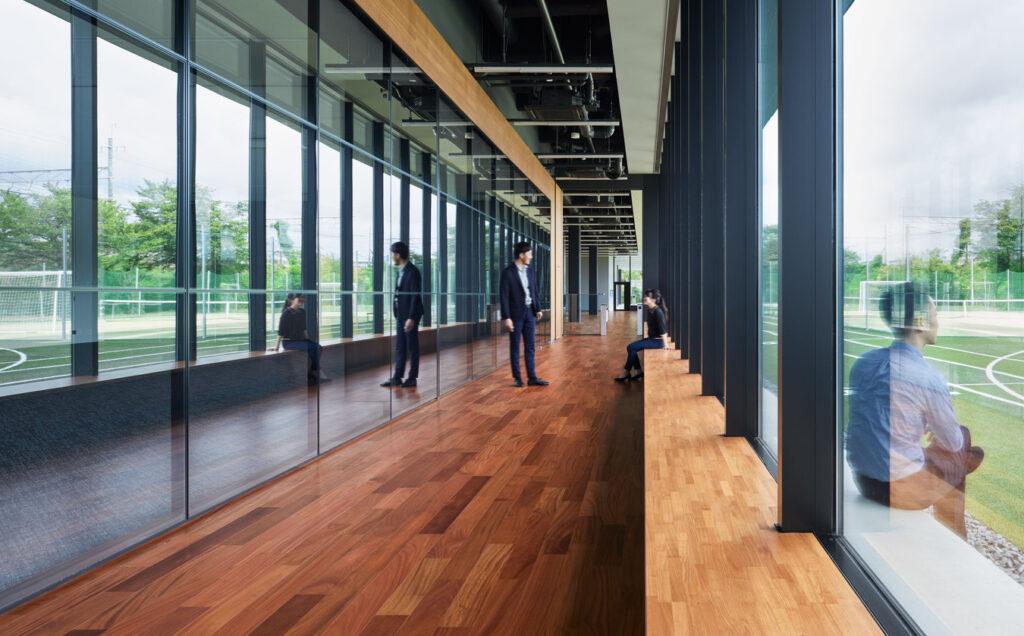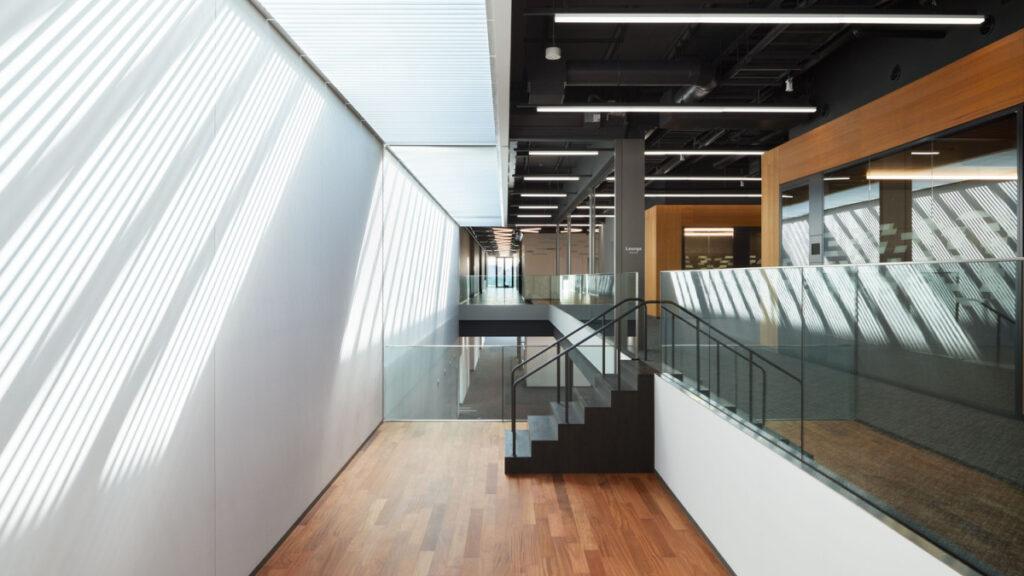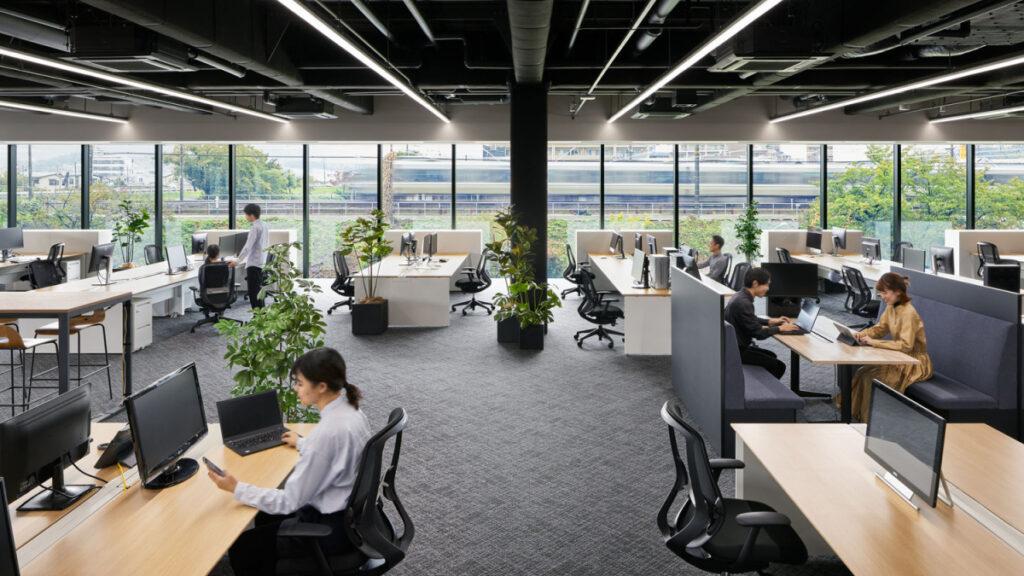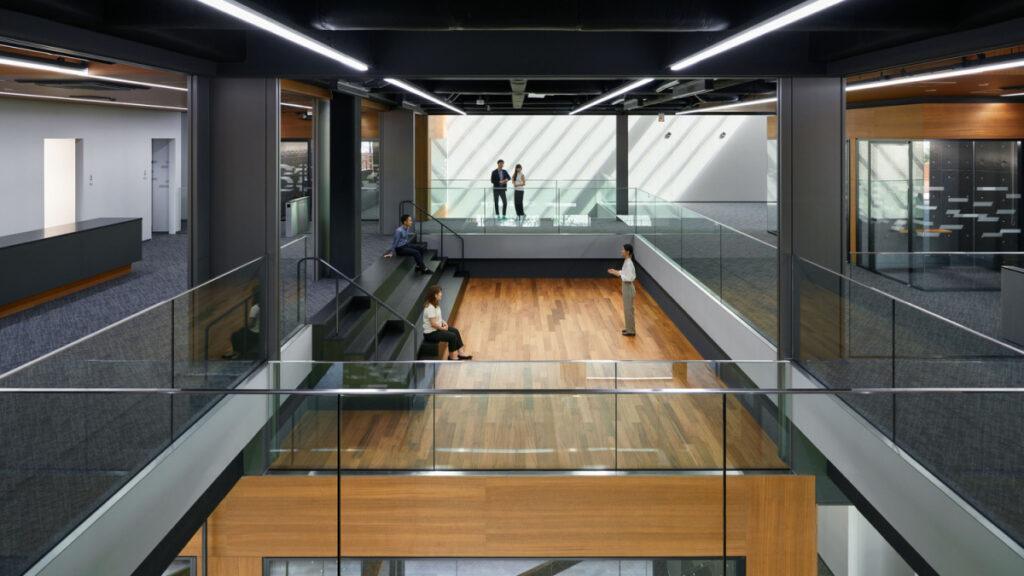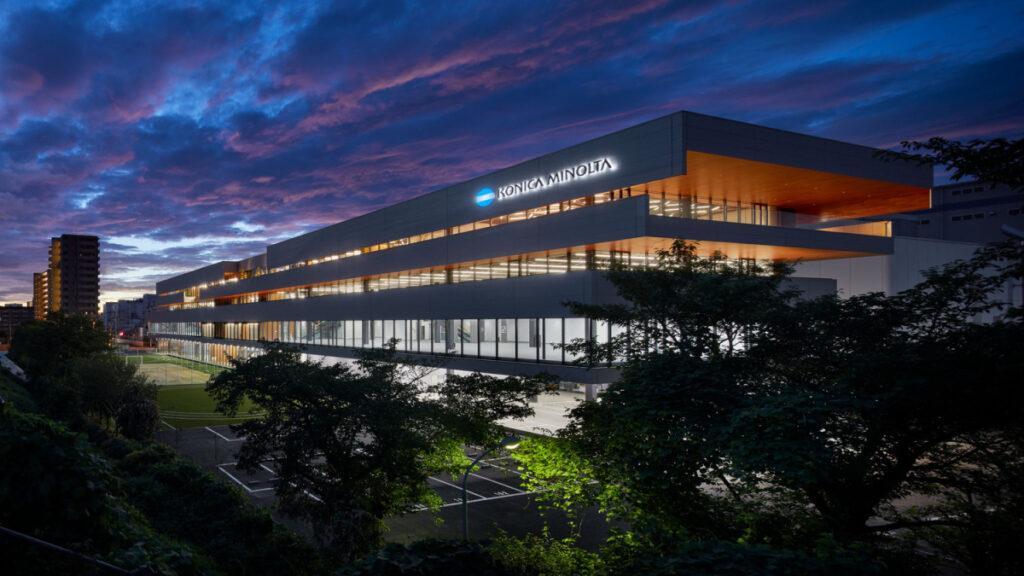Cool ideas for big issues of the future
Japanese technology giant Konica Minolta is treating its new research centre not only to a modern design, but also to architecture offering clever alternatives in the fight against climate change.
There’s an old Japanese proverb that says: for rice cakes, go to a rice cake maker. Behind this is the subtle hint that specialists simply deliver the best results. The long-standing Japanese company Takenaka proudly claims this position for itself: “Even though some believe that separating design and construction will result in a good building, we are very encouraged to see that many clients opt for work from a single source.”
Contribution for future generations
This can be read as a polite understatement: the Takenaka Corporation is one of the five largest construction engineering companies in Japan and, with some 7,500 employees (including more than 2,400 architects), offers comprehensive architectural, engineering and construction services.
The company, which was founded in Nagoya in 1610 by temple carpenter Tobei-Masataka Takenaka, has been managed since 1980 by the now 79-year-old Toichi Takenaka and is in its 17th generation. The company’s philosophy can be succinctly summed up in one sentence: “We want to contribute to society by passing on the best works to future generations.”
“Be industrious”
For its staff, Takenaka has also defined other cornerstones of a proud, traditional philosophy: “Take the path of truth, keep good faith and be steadfast. Be industrious and fulfil your responsibilities. Devote yourself to your work with discipline. Act in harmony with the organization and pursue prosperity for all of society.”
Takenaka’s work has been making a mark in Japan for many years. Its most important and best-known buildings include the Nippon Budōkan in Tokyo (which recently hosted the judo and karate events in the 2020 Summer Olympics), the Tokyo Tower and the Nagoya TV Tower, built on the basis of the Eiffel Tower, which was spectacularly “destroyed” by the movie monster Godzilla in the 1964 film “Mothra vs. Godzilla”.
Fast-growing commuter heartland
Among Takenaka’s more recent works is the Innovation Garden OSAKA Center, an office building for office electronics manufacturer Konica Minolta, which opened at the end of 2020 after a twelve-month construction period and covers a total area of approximately 12,000 square metres. This building is in Takatsuki, a city with a population of 350,000 located in Osaka Prefecture on Japan’s largest island, Honshu, halfway between Osaka and the former imperial city of Kyoto. This region, called Kinki (“near the capital”) or Kansai (“west of the border”), forms the economic, political and cultural centre of western Japan.
As the two megacities of Osaka and Kyoto are only 15 and 13 minutes away by train respectively, Takatsuki, which was only established in 1943, is developing into a rapidly growing city for commuters to live. And now also into the headquarters for Konica Minolta’s research department in the promising fields of Internet of Things (IoT) and artificial intelligence (AI).
Platform for new ideas
According to Takenaka, the new four-storey building, which was constructed close to Takatsuki Station and the Akuta River, represents a platform “where people, nature and information can interact and contribute to the creation of corporate innovation: we want to create a patchwork of environments such as inside/outside, light/dark, movement/stillness and open/closed. Not by the type of furniture or interior design, but by the composition and planning of the architecture.”
The offices are divided into different zones so that employees can choose from diverse workstyles.
Konica Minolta
This is achieved, among other things, by the long, narrow floor plan of 120 by 30 metres. “The building design, with the arrangement of the stairs and lifts, allows staff to move in an unobstructed flow without getting in each other’s way.”
Konica Minolta – interaction and concentration
According to Konica Minolta, the Innovation Garden will promote external collaboration as well, as stated on its website to mark the opening: “The offices are divided into different zones so that employees can choose from diverse workstyles. The interaction area helps generate innovative ideas based on freewheeling thinking in cooperation with local companies and universities.”
The concentration area, on the other hand, enables employees in the fields of IoT and AI to “reflect ideas invented in the interaction area immediately in the development process”.
Activity-based working
Last but not least, Konica Minolta wanted to incorporate the system of activity-based working (ABW). This office concept aims to promote performance and creativity through its organizational structure with activity-based workplaces: “We wanted to create an environment where new relationships emerge in a dynamic and agile way in an inhomogeneous environment.”
Konica Minolta is a global technology company with headquarters in Tokyo. It arose in 2003 from the merger of camera pioneer Minolta and its competitor Konica. Around 44,000 employees in 50 countries around the globe work on innovative solutions for companies and society. With its “strengths in advanced imaging, optics, sensing, materials and nano-fabrication,” Konica Minolta says it is committed to “creating new values that support customers in facing the challenges in their businesses and work processes”.
“Cool” award
In early April 2022, the Innovation Garden OSAKA Center won the special prize of the Osaka Climate Change Measures Award, the Ryo Design and Architecture Award. The award is presented by the Osaka Prefecture government to companies that make exceptional efforts to prevent climate change or take measures to mitigate the urban heat island effect.
The “cool” award (to use the translation of the Japanese term “ryo”) was largely thanks to three factors taken into account in the construction of the Innovation Garden. Firstly, green spaces were integrated on the site to cushion the rise in temperature during the daytime. These include multi-purpose areas where employees can do sports during breaks.
Balconies provide shade
The use of space was also praised: between an existing building and Takenaka’s new construction there is a large area that has been covered with wood to prevent the ground from heating up as much.
Of course, the careful use of energy was also a key factor: to increase air-conditioning efficiency in the summer, especially heat-insulating sandwich panels and multi-layered low-emissivity glass were used for the outer façade. In addition, architectural measures were used to reduce direct sunlight. For example, the building has greened balconies on every floor, which also provide shade for the offices below. And where better to enjoy a rice cake than in the shade?
Text: Hannes Kropik
Photos: Nacása & Partners
